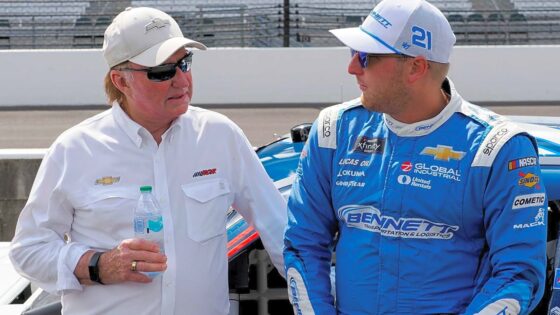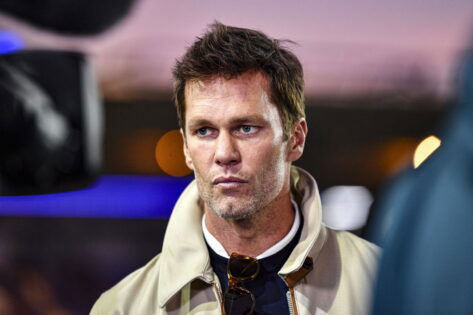Austin Hill has been a force in the 2025 NASCAR Xfinity Series, piloting the No. 21 Chevrolet for Richard Childress Racing with wins at Atlanta, Martinsville, and Talladega under his belt. His season also boasts strong runs like a third at Homestead, fourths at Circuit of the Americas, Las Vegas, the Chicago Street Course, and Watkins Glen, plus a seventh at Charlotte and Nashville and a third at Mexico City. Yet, despite his impressive stats, the 31-year-old’s aggressive driving style has come under fire. First, for a heated clash with Aric Almirola earlier this season that resulted in a one-race suspension, and now for triggering a high-impact crash at Watkins Glen that left several contenders damaged. The back-to-back incidents have intensified calls for NASCAR to take a closer look at patterns of on-track behavior, regardless of their standing or team affiliation.
Remember when NASCAR made headlines back in 2011? Kyle Busch was suspended for the entire race weekend after intentionally wrecking Ron Hornaday Jr. in the Truck Series at Texas. That kind of precedent still echoes today, especially as fans scrutinize similar moments.
Austin Hill’s season took a hit after his clash with Aric Almirola at Indianapolis on July 26, a run-in that sent the latter into the wall and led to Hill’s suspension for the Iowa race, plus a loss of 21 playoff points. Hill insisted, “From my standpoint, it was fully unintentional.” Now, fans are watching closely after Hill’s role in a massive wreck at Watkins Glen on August 9, where he tangled with Michael McDowell and triggered a nine-car pileup.
Hill’s No. 21 Chevrolet made contact with Michael McDowell ’s No. 11 exiting Turn 5 at Watkins Glen, spinning McDowell into the left-side Armco barrier. Hill then ricocheted across the track, briefly went airborne, and slid into oncoming traffic, triggering a pileup that collected nine more cars. The crash destroyed equipment for smaller teams like DGM Racing and RSS Racing. Earlier in the race, Hill had also bumped Connor Zilisch on a Lap 69 restart, adding to the tension but not causing the major wreck.
The Richard Childress Racing driver finished fourth, but the incident stirred fresh debate about NASCAR’s officiating, especially given his recent one-race suspension for wrecking Aric Almirola. McDowell said, “He turned me for sure,” but clarified, “I’m not talking like he intentionally hooked me. He doesn’t need a penalty for that.” Austin Hill echoed that view, saying, “Just two guys going for it. Nothing malicious.” With no clear evidence of intent and both drivers downplaying the clash, NASCAR is likely to view it as hard racing, though the wreck’s impact has reignited calls for more consistent enforcement.
Over on Reddit, a post titled “Realistically, what is the chance Austin Hill gets another suspension for his incident at the Glen?” has fans diving deep into the odds, sharing takes on NASCAR’s patterns and Hill’s history. This online buzz captures the pulse of the community, leading straight into how supporters are processing the drama.
Fan fury over Austin Hill’s wreck: Is NASCAR playing favorites again?
One fan pointed out, “If the previous penalty had come with ‘probation,’ then I would say yes.” This highlights how NASCAR’s handling of Hill’s Indianapolis suspension, straight to a one-race ban without added probation, might limit follow-up actions. Without that layer, officials have less leverage for escalation, similar to when Dale Earnhardt Jr. avoided further discipline after a 2004 Talladega spin because his prior incidents lacked probation ties. Fans see this as a missed chance for stricter oversight, especially with Hill’s quick return yielding more contact.
“Probably low; they tend to give the benefit of the doubt unless it’s just stupidly obvious.” NASCAR’s track record backs this, often reserving suspensions for clear-cut cases like Hill’s admitted intent at Indy, while Watkins Glen’s ambiguity gets a pass. Think back to the 2015 Martinsville chase, where Matt Kenseth wrecked Joey Logano in retaliation; it was obvious enough for a two-race ban, but subtler bumps rarely draw heat, leaving fans frustrated over inconsistent calls.
A user stated, “None, because they can’t prove it was intentional, unlike the Indy incident.” Proof is key here, as NASCAR requires evidence like radio chatter or video angles showing deliberate hooks, which Watkins Glen lacks per McDowell’s own words. This mirrors the 2010 Atlanta flip, where Carl Edwards intentionally wrecked Brad Keselowski, earning three races on probation only because intent was undeniable, whereas racing deals like Hill’s slide by.
“McDowell even said it was a bad racing deal. Zero chance. And Dale did that all the time and you all claim to love it.” McDowell’s post-race take supports no foul play, drawing parallels to Dale Earnhardt Sr.‘s bump-and-run style in the 1990s, like his 1999 Bristol move on Terry Labonte that fans cheered without calls for bans. It shows how legends got leeway, fueling debates on evolving standards.
Finally, a fan vented, “No chance. This series is a joke, they’d rather trash equipment for commercial highlight reels than actually race with the slightest semblance of driving standards.” The wreck’s highlight of potential over safety echoes criticisms after the 2022 Daytona pack racing chaos, where big crashes boosted views but wrecked budgets for teams like RSS, who lost cars without repercussions, underscoring calls for better enforcement.
The post Fans Fear Richard Childress’ Star Walking Away Without Penalty After Vicious Wreck appeared first on EssentiallySports.



